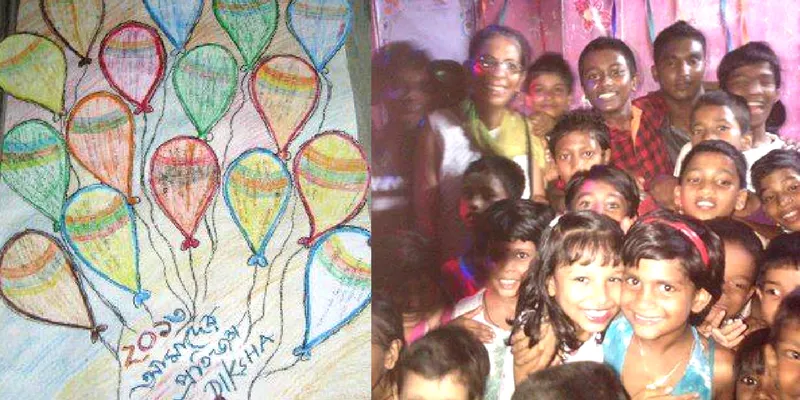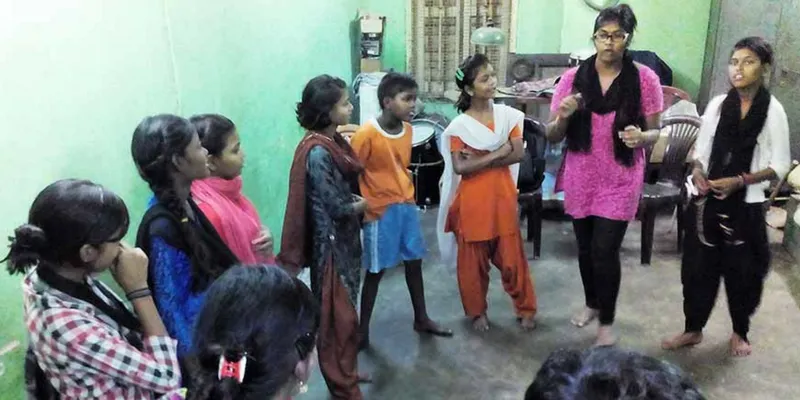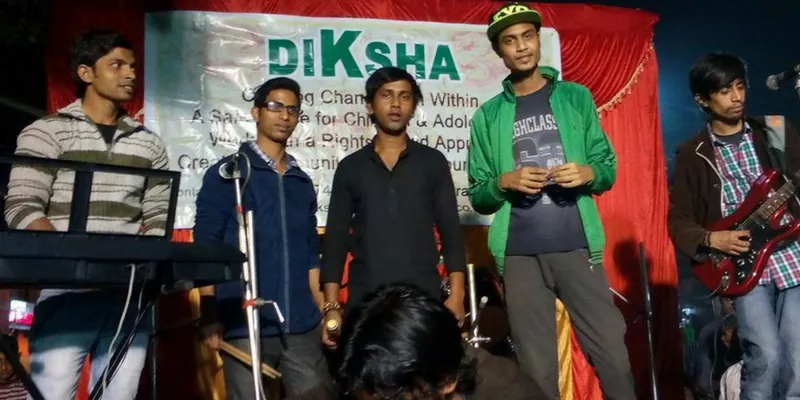This Kolkata-based NGO is empowering marginalised children through awareness
Kolkata-based DIKSHA has been working towards the uplift of children in red-light areas since 1999. Paramita Banerjee’s NGO has positively affected the life of 9,000 children till now.

Every year, scores of women are lured and brought into cities in the hope of a better job and a good life, only to end up in a brothel, living a life of destitution in red-light areas.
In the city of Kolkata, the red-light areas of Kalighat, Khidirpur and Munsiganj have seen numerous women and children being trafficked over the years. Poverty and low literacy make these women and children highly vulnerable to exploitation.
That’s where DIKSHA, a non-profit organisation, steps in. (DIKSHA) was started in Kalighat in 1999. Since then, the organisation has been working with marginalised children and youth to help protect their rights and resolve issues around gender and sexuality through participation in development programmes.
'Adolescent Sexuality and Fertility: Reaching an Informed Choice’
Led by Paramita Banerjee, an Ashoka Fellow, DIKSHA grew out of a programme enabled by a Fellowship for Leadership Development from the MacArthur Foundation that Paramita had secured for the period 1999-2001.
The project, dubbed “Adolescent Sexuality and Fertility: Reaching an Informed Choice”, started in Kalighat. It began with an aim to create a space for the most vulnerable age group, 10-19-year-olds from slum areas, to voice, debate, discuss and resolve issues around gender and sexuality, without infringing on their right to privacy and silence.
DIKSHA was born because 16 adolescents from the Kalighat red-light area wanted to consolidate a programme specifically for adolescents. That’s why Paramita calls herself the “incidental 17th co-founder”. Some of those 16 adolescents have now moved on, but continue to stay in touch. Two are still part of the DIKSHA Work Group.

When Paramita started working in Kalighat, Khidirpur and Sonagachi in August 1999, the project she had in mind was empowering adolescent participants through an understanding of their own bodies and sexuality. She planned to do this by using interactive open-ended workshops with no pre-determined modules. Needs were assessed by the participants themselves, and they proceeded accordingly. The aim was to encourage a thought process that was more gender inclusive, rather than the norm accepted presently.
Paramita’s greatest challenge came up in the form of tremendous resistance from mothers when they learnt that “taboo topics” involving gender and sexuality were being discussed with their children. However, during one of the meetings, young participants responded to every question posed by the adult women without Paramita even needing to open her mouth. That solved the problem, and mothers now demanded that Paramita conducts workshops with them as well so they could also be part of the transformation.
Empowerment through awareness
DIKSHA follows a three-tier system where young people, in the age group of 8-18 years, start attending sessions where they learn about their rights and entitlements. These are enabled through the development of skills for mapping areas of violations and leadership skills to challenge, resist, prevent and redress situations of rights violations.
Rights violations generally refer to forced labour, which includes being forced into working in brothels or being trafficked.
Paramita says that some of the adolescents and children forced into labour are “not even aware that they can’t be forced to do something against their will”.
These kids select their own leaders who receive additional skill development in leadership, advocacy and alliance building. They are linked directly to bodies of power such as the police, local elected representatives and school teachers, who act as 24X7 watchdogs to intervene in any situation of rights violation faced by any child in the area. They are supported by the Rakhi team, a group of adult women who act as backup support for initiatives by the women. Further, members of the work group comprising youth from the community are now on DIKSHA's payroll, Paramita says.
Paramita is constantly trying to improve the approach of child protection through participation and working with newer groups and children by creating leaders.

To cite an instance, she is currently spearheading a programme, Education PLUS (Positive Learning to Upgrade Self-esteem) to build leadership skills and link adolescents with Ward Level/ Village Level Child Protection Committees. The protection committees are being set up by state governments as statutory bodies under the Integrated Child Protection Scheme. The Education PLUS programme is also accessed by local school-going children, municipal and Sarva Shiksha Mission schools, and socio-economically marginalised children.
Positively influencing the lives of children
At any given point of time, there are about 110-150 children directly participating in the DIKSHA programme in the two red-light areas and five slums they are active in.
Read More:
How Devadasis went from having high social status to being sex slaves and child prostitutes
One in five children face online abuse. This is how parents can fight back
“On a regular basis, we organise information-sharing sessions on the rights and entitlements of young people, skill-building sessions on how to identify and map violations of rights and how to resist, challenge, prevent and redress any forms of violations of rights,” Paramita says.
The forced intergenerational entry of girls into the sex trade has reportedly been entirely eliminated from Kalighat due to DIKSHA’s efforts.
Child Sexual Abuse was regarded as ‘normal’ and ‘inevitable’ for girls, and ‘non-existent' for boys when work was started in the Kalighat red light area. Today, there is 100 percent reporting and community-level prevention of any such incident for both girls and boys, Paramita says.
Taking direct and indirect beneficiaries together, DIKSHA has been able to positively influence the lives of close to 9,000 children so far.
“About 1,500 children have undertaken the DIKSHA journey directly; through them and because of the changes they have led to in their neighborhoods and communities, close to 9,000 children have benefited indirectly,” Paramita explains.

While the community-based social workers of DIKSHA will continue to work with children in the 8-18 age group in red-light areas and surrounding slums, Paramita is creating a new team and raising funds to develop a separate wing that will function as a Resource Organisation.
The research wing of the resource organisation will work in collaboration with other organisations to develop their capacity in instituting community-based mechanisms for child protection. More power to DIKSHA!
Enter the SocialStory Photography contest and show us how people are changing the world! Win prize money worth Rs 1 lakh and more. Click here for details!







